
Wat Phra That Doi Phrachan: A Blend of Thai and Japanese Heritage
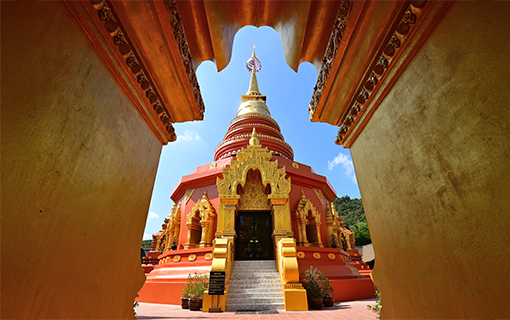
Chedi Phra Maha Chulamanee Sri Phothiyan : A majestic stupa adorned with intricate golden details, standing as the spiritual centerpiece of the temple grounds.
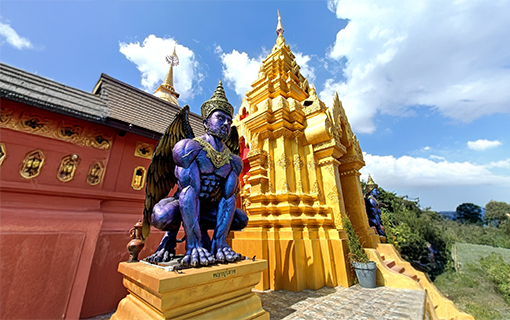
Sculpture of Phaya Purisada in Front of Chedi Phra Maha Chulamanee Sri Phothiyan : A striking guardian sculpture symbolizing protection and reverence, positioned prominently before the sacred stupa.
Nestled in Mae Tha, Lampang Province, Wat Phra That Doi Phrachan is a unique temple that seamlessly blends Thai and Japanese artistry. The temple is divided into two main areas: the lower flatlands, which house the ordination hall and chedi, and the hilltop, home to the vihara (assembly hall) and the awe-inspiring Great Buddha (Daibutsu). From the hilltop, visitors can enjoy panoramic views stretching as far as the eye can see.
But why does this Thai temple feature a Daibutsu and Japanese-style architecture?
The Story Behind the Daibutsu
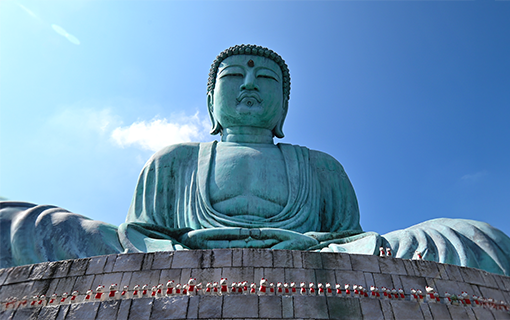
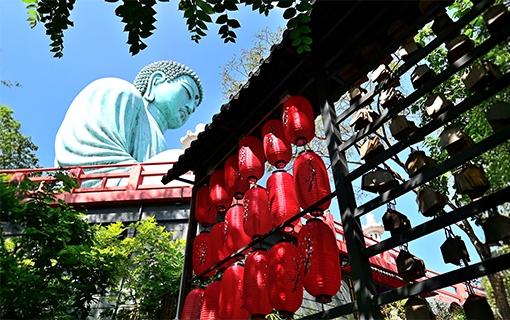
The Daibutsu – Japanese Buddha Statue on the Hilltop : A monumental Japanese-style Buddha statue, situated on one side of the hilltop, distinct from the vihara. Its calm demeanor invites peace and reflection.
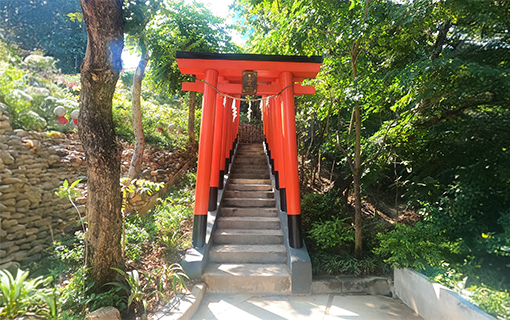
Path Leading Up to the Daibutsu : A serene walkway shaded by greenery, guiding visitors to the revered Japanese Buddha statue for prayer and meditation.
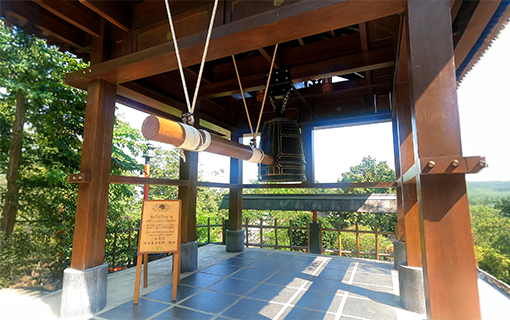
Japanese-Style Bell Tower near the Daibutsu : A traditional bell tower featuring authentic Japanese architectural design, adding a cultural charm to the area near the Daibutsu.
Legend has it that a monk had a vision of a Great Buddha. Later, a lay devotee also dreamt of the same statue. Inspired by these spiritual experiences, the temple decided to create a Daibutsu modeled after the one in Kotoku-in Temple, Kamakura, Japan. Surrounding elements were also designed with a distinctly Japanese influence.
Significance of the Daibutsu
The Great Buddha of Kamakura, built in 1252, is a revered cultural treasure of Japan. Standing at 11.3 meters tall, it was originally housed in a temple building that was destroyed by an earthquake in 1498. Remarkably, the Buddha itself remained intact and has endured for centuries as a symbol of resilience and protection.
More Than Just a Daibutsu
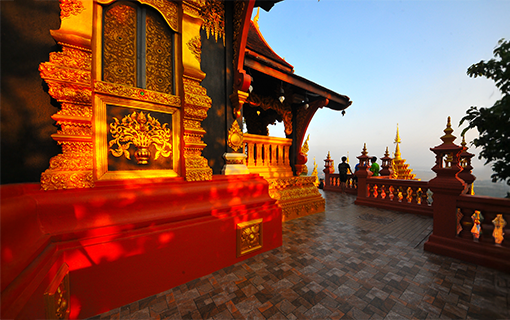
Viewpoint Beside Vihara Somdej Ong Pathom : A pathway leading to an open space that offers expansive panoramic views of the surrounding landscape, ideal for quiet contemplation.
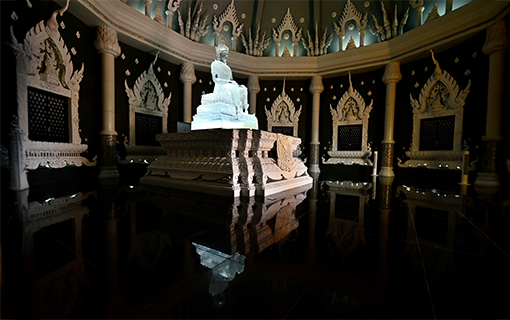
Phra Wisutthep Inside Chedi Phra Maha Chulamanee Sri Phothiyan : A serene statue of Phra Wisutthep enshrined within the stupa, radiating a sense of divine grace and tranquility.
Beyond the Japanese-inspired statue
Beyond the Japanese-inspired statue, Wat Phra That Doi Phrachan offers a wealth of attractions:
- The Vihara by the Cliff: A serene space with breathtaking views.
- The Phra That Chedi: An ancient relic tower central to the temple.
- The Chedi of Wisutthep: A newly restored stupa.
- The Ordination Hall: Featuring intricate Buddhist art and sculptures.
The temple has undergone extensive restoration after years of neglect, incorporating a mix of traditional and modern elements. Highlights include detailed stucco work, smaller chedis, and various statues scattered across the grounds, each showcasing exceptional craftsmanship.
A Temple of Spirituality and Beauty
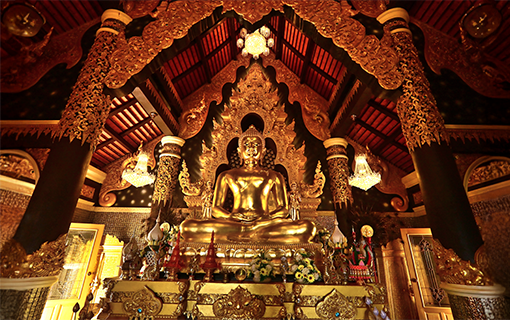
Somdej Ong Pathom Statue : A revered statue of Somdej Ong Pathom, embodying the sacred presence within the temple grounds.
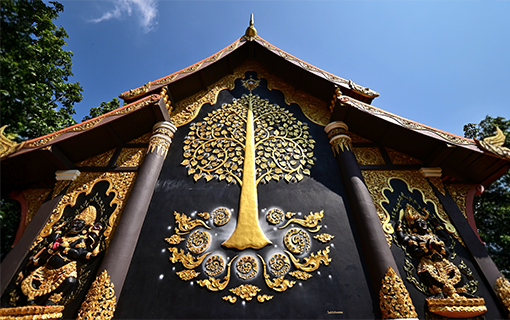
Back of Vihara Somdej Ong Pathom : The back of the vihara showcases elaborate Lanna-style stucco work on its walls, reflecting the rich heritage of Northern Thai Buddhist art.
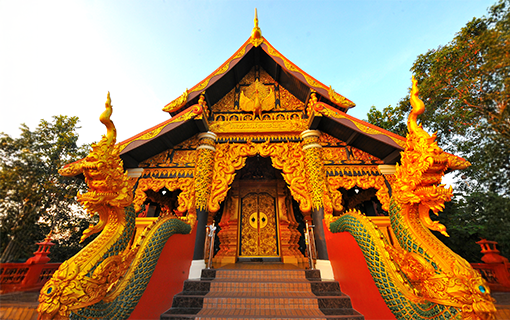
Front of Vihara Somdej Ong Pathom : A stunning display of Lanna Buddhist artistry, evident in both its sculptures and architectural elements, beautifully preserved at the vihara's facade.
Visiting Wat Phra That Doi Phrachan is both a spiritual and cultural experience. Paying homage to the relics and admiring the artistic blend of Thai and Japanese styles provides a sense of peace and wonder. The Vihara Somdej Ong Pathom is particularly striking, offering a sweeping 180-degree view of the surrounding landscape.
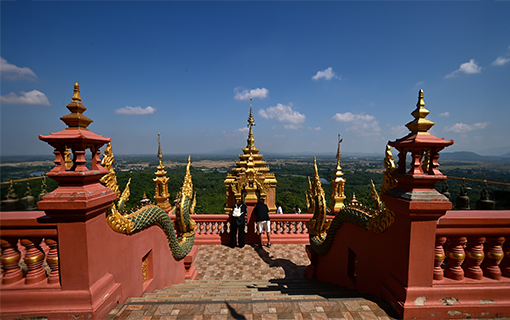
Courtyard in Front of Vihara Somdej Ong Pathom : A spacious and welcoming courtyard at the vihara's entrance, often filled with visitors offering prayers and enjoying the serene atmosphere.
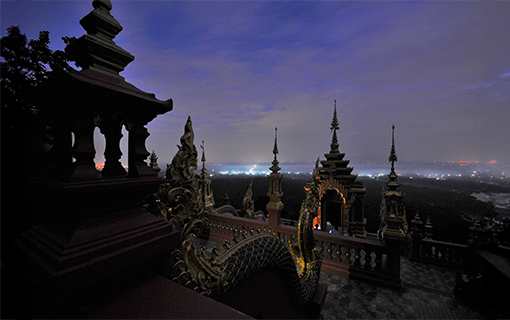
Vihara Somdej Ong Pathom at Dawn : The vihara bathed in the soft hues of early morning light, creating a tranquil and spiritual ambiance.
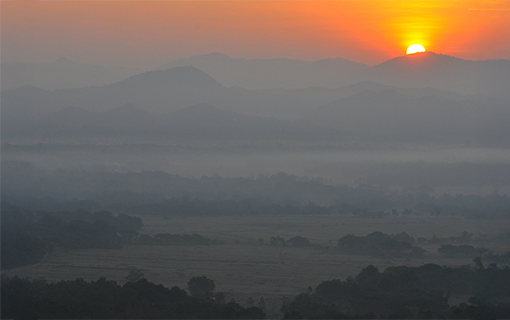
Sunrise Captured from the Courtyard of Vihara Somdej Ong Pathom : A breathtaking view of the rising sun, casting golden rays over the temple grounds and the distant horizon.
For those exploring Lampang, a trip to this temple is highly recommended. The combination of rich Buddhist art, serene ambiance, and stunning views makes it a destination that uplifts the heart and soul. Don’t miss this remarkable site—it’s a true gem that adds depth and joy to any journey in Lampang.
Editor in Chief : Nampetch Siramanon
Editor: Pacific Leisure (Thailand)
Content Creator : Mr. Saroj Na Ayutthaya
Navigate
Terms & Privacy
Pacific Leisure (Thailand) Limited
No. 888/154, Mahatun Plaza Bldg., 15th Floor,
Ploenchit Road, Lumpini, Pathum Wan,
Bangkok 10330, Thailand
Phone : +66 22 542 966
Mobile : +66 87 347 3111, +66 63 224 1384
Email : info@pacificleisureth.com
Website : https://www.PacificLeisureTH.com
(TAT) Licensed No: 11/00161

